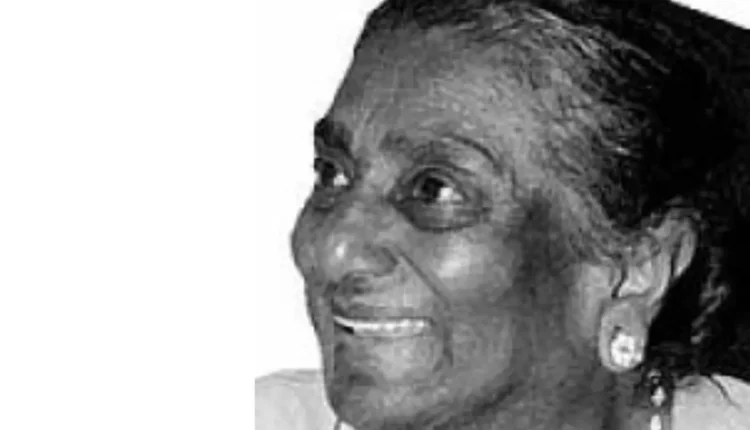In the annals of history, few names shine as brightly as that of Ama Naidoo, a dedicated anti-apartheid activist whose courage and commitment to justice set an example for generations to come.
Born Manonmoney Ama Naidoo on November 30, 1908, she was a woman who defied the odds, transcending the limitations imposed upon her by a society that sought to diminish her strength and the oppressive system of apartheid that attempted to silence her voice. Her legacy endures as a beacon of inspiration for those who fight for equality and justice across the world.
Early Life of Ama Naidoo: Roots in Resilience
Ama Naidoo was born in the Asiatic Bazaar in Pretoria, South Africa, into a family of South African Indian descent. Her upbringing was shaped by her role as the only daughter among eight brothers in a bustling family business.
Despite her primary school education in Pretoria, she did not pursue an independent career due to the demands of caring for her family and home. This, however, did not diminish her sense of purpose and strength. Her early life was rooted in resilience, learning to manage the complexities of family life while developing a deep sense of responsibility to her community.
At the age of 26, Ama married Naransamy Roy Naidoo, the son of Thambi Naidoo, one of Mahatma Gandhi’s closest allies and a dedicated Satyagrahi. This connection to Gandhi and his philosophy of nonviolent resistance would deeply influence Ama’s path. Her husband Roy had spent time at the Tolstoy Farm in Johannesburg, a community founded by Gandhi, where he learned the values of simplicity, self-sufficiency, and steadfast resistance to oppression.
Becoming a Leader in the Fight for Justice
Ama Naidoo’s political awakening was inextricably linked to her marriage. Roy Naidoo returned to South Africa in 1928 after spending time at Rabindranath Tagore’s Ashram, Shantiniketan, and later at Sabarmati Ashram in India.
He immersed himself in the trade union movement and became a member of the Communist Party of South Africa (CPSA). Ama, standing by his side, became deeply involved in the political activism of the time. Their shared commitment to justice forged a powerful partnership in the struggle against apartheid.
Ama’s first significant involvement in political activism came during the 1946 Passive Resistance Campaign. This was a bold movement initiated by South Africans of Indian descent to resist the discriminatory laws that sought to control their freedom.
Ama Naidoo, with unwavering determination, courted imprisonment alongside her husband, displaying the courage that would define her life’s work. Her willingness to face incarceration exemplified her deep belief in nonviolent resistance, a principle that guided her throughout her activism.
In 1952, Ama once again joined the Defiance Campaign, a mass movement of civil disobedience against apartheid laws. For her participation, she was imprisoned yet again. These experiences of incarceration did not deter her; instead, they solidified her resolve to fight against the oppressive apartheid regime.
A Voice for Women’s Rights
Ama Naidoo’s activism extended beyond her fight against apartheid. In 1954, she became a member of the Federation of South African Women (FEDSAW) and was elected to its executive committee. Her involvement in FEDSAW marked a critical moment in her journey, as she began to amplify her voice for women’s rights within the broader struggle for freedom.
One of the most significant moments in Ama’s activism came in 1956, when she joined 20,000 women in a historic march to the Union Buildings in Pretoria to protest the pass laws. The march was a defiant statement against the government’s attempt to control the movement of Black South Africans, and Ama Naidoo’s participation placed her at the forefront of this pivotal moment in South African history.
The women’s chant, “You strike a woman, you strike a rock,” echoed through the halls of power, symbolizing the strength and resilience of women like Ama who refused to be broken by the system.
Throughout the 1950s and 1960s, Ama Naidoo was a constant presence at marches, candlelight processions, and night vigils. She was fearless in her activism, always ready to lend her voice and energy to the cause of justice.
In 1963, she participated in a protest against the formation of the South African Indian Council, a body created by the apartheid government to further segregate and control the Indian population. Ama’s willingness to speak out and take action in the face of danger made her a formidable figure in the fight for freedom.
A Family United in Resistance
Ama Naidoo’s legacy is also marked by the sacrifices of her children, who, like their mother, were deeply committed to the struggle against apartheid. All of her children—Shanthie, Indres, Murthie, Ramnie, and Prema—were imprisoned, detained, tortured, and harassed by the apartheid security police.
Despite these personal losses, Ama remained steadfast in her resolve. Her home became a hub of political activity, frequently visited by prominent leaders such as Moses Kotane, Nelson Mandela, and Walter Sisulu.
Ama Naidoo’s home was more than a place of residence; it was a sanctuary for leaders of the anti-apartheid movement. Her famous crab curries were savored by none other than Nelson Mandela, reflecting the warmth and generosity she extended even in the midst of turmoil. Her unwavering support for her family and the movement created a powerful legacy of resistance that continues to inspire to this day.
The Legacy of Ama Naidoo
Ama Naidoo’s passing on December 25, 1993, came just under two years before South Africa’s first multiracial elections, a historic moment that she had fought so long and hard to see. While she did not live to witness the fruits of her struggle, her spirit lived on in the triumph of democracy. In 2006, Ama Naidoo was posthumously awarded the Order of Luthuli in Silver, a fitting tribute to her contributions to the fight for freedom and justice in South Africa.
Also Read:Tara Singh Hayer: The Bravery Behind the Indo-Canadian Times

